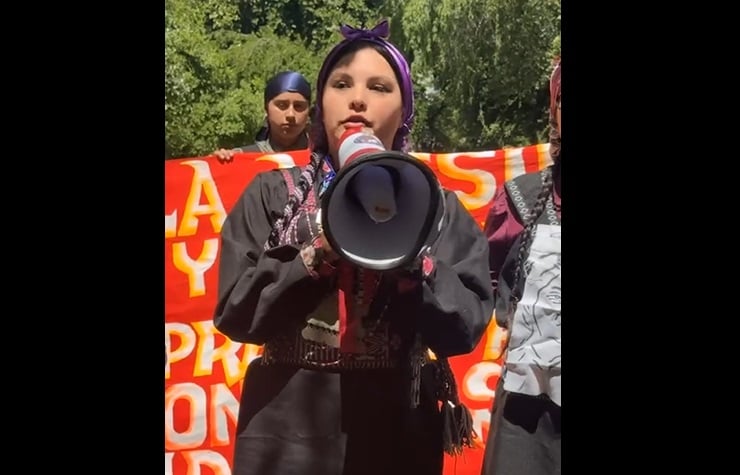‘Destined to fail’: 5-year-old’s murder exposes cracks in Florida child protection system – Tallahassee Democrat

Report on Institutional Failures in the Case of Missy Mogle and Implications for Sustainable Development Goals
The death of five-year-old Missy Mogle on May 19, 2025, following severe abuse, highlights critical failures within state institutions responsible for child welfare and justice. This case serves as a stark illustration of the challenges in achieving key United Nations Sustainable Development Goals (SDGs), particularly SDG 16, which aims to promote peaceful and inclusive societies, provide access to justice for all, and build effective, accountable, and inclusive institutions at all levels.
Chronology of Events
- July 2023: A court transfers custody of Missy from her grandparents, Pepper and Andy Mogle, to her mother, Chloe Spencer. This decision was made despite the grandparents’ expressed concerns about the mother’s stability and her husband, Daniel Spencer.
- February 2024: Daniel Spencer is arrested in an undercover child sex sting. Subsequently, Chloe Spencer places Missy in the care of a family friend, Paig Carnahan, using a revocable power-of-attorney agreement.
- July 2024: Missy alleges that her stepfather, Daniel Spencer, molested her. The Florida Department of Children and Families (DCF) and the Tallahassee Police Department (TPD) launch investigations.
- July 2024: Both DCF and TPD close their investigations. DCF’s decision is based on the power-of-attorney arrangement intended to keep Missy from her stepfather, a measure deemed insufficient by child welfare experts.
- September 2024: Paig Carnahan returns Missy to the custody of her mother and stepfather.
- October 2024: A domestic dispute between Chloe and Daniel Spencer is reported to DCF, as children were present. No significant follow-up action is recorded.
- April 15, 2025: Daniel Spencer is convicted in the sex sting case. The presiding judge allows him to remain free on bond pending sentencing.
- May 19, 2025: Missy Mogle dies from injuries sustained through abuse and torture. Her mother and stepfather are arrested and later indicted on first-degree murder charges.
Analysis of Institutional Performance Against SDG 16: Peace, Justice and Strong Institutions
The circumstances leading to Missy Mogle’s death reveal significant deficiencies in the systems designed to protect children, directly contravening the targets of SDG 16.
Target 16.2: End abuse, exploitation, trafficking and all forms of violence against and torture of children.
The failure to protect Missy from sustained abuse and torture represents a fundamental breakdown in the state’s commitment to this target. Key institutional failures include:
- Florida Department of Children and Families (DCF): The agency’s approval of a non-judicial, easily revocable power-of-attorney agreement as a safety plan in a sexual abuse case was a critical error. This approach contradicted a 2010 DCF memo advising against such measures and failed to provide a durable layer of protection. The subsequent closure of the molestation investigation and lack of follow-up after a domestic violence report further demonstrate a systemic inability to ensure the child’s safety.
- Tallahassee Police Department (TPD): The decision to close the molestation investigation based on perceived inconsistencies in a four-year-old’s testimony, without further protective action, left a vulnerable child in a dangerous environment.
Target 16.3: Promote the rule of law and ensure equal access to justice for all.
The judicial system’s actions and inactions compromised the principles of justice and protection for a vulnerable child.
- Judicial Decisions: The court’s decision to allow Daniel Spencer, a convicted felon in a child sex crime, to remain free pending sentencing directly enabled the subsequent abuse. Furthermore, delays in hearing the grandparents’ petition for custody, which was filed nearly a year before Missy’s death, represent a failure to provide timely access to justice.
- Systemic Context: The case occurred amid a reported decline in child protective investigators in Leon County and a statewide drop in children being placed in foster care. These trends may indicate systemic weaknesses that reduce the capacity of institutions to act decisively, thereby undermining the rule of law for the most vulnerable.
Implications for Other Sustainable Development Goals
SDG 3: Good Health and Well-being
The primary objective of ensuring healthy lives and promoting well-being for all at all ages (SDG 3) was catastrophically failed. The state’s inability to prevent the child’s death from inflicted trauma is a direct contradiction of Target 3.2, which aims to end preventable deaths of children under five years of age.
Conclusion and Proposed Reforms
The tragic death of Missy Mogle is a direct consequence of multiple, intersecting failures within the child welfare and judicial systems. These failures underscore a profound gap between the stated goals of public institutions and their operational capacity to protect vulnerable children, thereby impeding progress toward SDG 16 and SDG 3.
In response, legislative action has been proposed in the form of “Missy’s Law,” which would prohibit the pre-sentencing release of defendants convicted of sex crimes. While this reform addresses one specific judicial failure point, the case demonstrates a need for a more comprehensive review of child protection protocols, inter-agency coordination, and judicial oversight to ensure that the state can effectively uphold its commitment to the Sustainable Development Goals and prevent such tragedies in the future.
Which SDGs are addressed or connected to the issues highlighted in the article?
SDG 16: Peace, Justice and Strong Institutions
- The article is a case study on the failure of institutions responsible for justice and child protection. It details how the state’s child welfare system (DCF), the police (TPD), and the courts failed to protect a vulnerable child from violence and abuse. The narrative questions the effectiveness, accountability, and transparency of these institutions, as shown by the statement, “Her death sparked an outpouring of grief in Florida’s capital city and raised mounting questions about how the state’s child welfare system, the courts, police and others might have failed to protect her.”
SDG 3: Good Health and Well-being
- This goal is relevant as the article focuses on the preventable death of a five-year-old child. The core issue is the failure to ensure a child’s physical safety and well-being, leading to her premature death from abuse. This connects directly to the goal of ending preventable deaths of children, as Missy’s death was described as something that “could have been prevented.”
SDG 5: Gender Equality
- The article addresses this goal by focusing on the extreme violence and sexual abuse perpetrated against a young girl. The victim, Missy, was subjected to molestation, physical abuse, and torture. The article states she told others that her stepfather “put his hands around her throat while touching her private parts.” This highlights the specific vulnerability of girls to sexual and physical violence.
What specific targets under those SDGs can be identified based on the article’s content?
SDG 16: Peace, Justice and Strong Institutions
- Target 16.1: Significantly reduce all forms of violence and related death rates everywhere. The entire article is about the violent death of a child. The evidence describes “hours of Daniel physically abusing Melissa by hitting her, violently pulling her arms, shoving her face into a bed, binding her feet and hands together, and covering her with pillows and comforters,” culminating in her murder.
- Target 16.2: End abuse, exploitation, trafficking and all forms of violence against and torture of children. This target is directly addressed. Missy suffered severe abuse, alleged molestation, and torture. The article notes she had “bruises in various stages of healing, cuts on her face, ligature marks around her wrists and burns on all of her fingers.” Furthermore, her stepfather was arrested in an “undercover child sex sting,” which relates to ending child exploitation.
- Target 16.3: Promote the rule of law … and ensure equal access to justice for all. The article critiques the judicial process. A judge’s decision not to jail the stepfather after a conviction, which “left him free on bond just before the murder,” and the year-long delay in the grandparents’ custody hearing demonstrate a failure in providing timely and effective justice for the child.
- Target 16.6: Develop effective, accountable and transparent institutions at all levels. The failures of DCF and the police are central themes. DCF signed off on a “questionable solution” with a power of attorney and closed its investigation despite molestation allegations. The article notes that DCF and TPD “refused to release any record” of their investigations, highlighting a lack of transparency and accountability.
SDG 3: Good Health and Well-being
- Target 3.2: By 2030, end preventable deaths of newborns and children under 5 years of age. Missy was five years old when she died. Her death is explicitly framed as preventable. The Attorney General is quoted as saying Missy’s case was tragic because “it could have been prevented,” and the State Attorney stated that if the stepfather had been jailed, “I’d have a 5-year-old who had a lot more life to live.”
SDG 5: Gender Equality
- Target 5.2: Eliminate all forms of violence against all women and girls in the public and private spheres, including trafficking and sexual and other types of exploitation. The article details multiple forms of violence against a young girl, Missy, including physical abuse, torture, and alleged sexual molestation by her stepfather within her own home.
Are there any indicators mentioned or implied in the article that can be used to measure progress towards the identified targets?
SDG 16: Peace, Justice and Strong Institutions
- Number of child deaths due to inflicted trauma: The article explicitly mentions statistics from DCF’s Child Fatality Prevention Program website, which “showed 257 child fatalities so far this year in Florida but only three from ‘inflicted trauma,’ not including Missy’s case.” This is a direct indicator for measuring violence.
- Number of children removed from homes and placed in foster care: The article points to a “big drop in Florida in the number of kids placed in foster care because of abuse, abandonment or neglect” as a statistic that “troubles some in the child protection field,” implying this could be a negative indicator of system effectiveness.
- Number of child protective investigators: A “decline in Leon County of child protective investigators” is mentioned as a factor overlapping with Missy’s case, serving as an indicator of institutional capacity to handle abuse cases.
- Number of reports to abuse hotlines: The article implies this metric when it states that “Pepper Mogle said she, her husband and others made numerous calls to DCF’s abuse hotline.” The volume and handling of these calls are an indicator of system responsiveness.
- Judicial outcomes in child sex crime cases: The proposal of “Missy’s Law,” which would “prohibit the release of defendants after they have been convicted of a sex crime,” points to the number of such releases as a key metric for judicial and legal reform.
SDG 3: Good Health and Well-being
- Child fatality rate: The article cites DCF data on “257 child fatalities so far this year in Florida,” which is a direct measure of child mortality. The breakdown by cause (drowning, sleep-related, inflicted trauma) provides more specific indicators.
SDG 5: Gender Equality
- Incidence of sexual violence against girls: The specific allegations that Daniel Spencer “molested Missy” and was arrested in a “child sex sting” serve as qualitative examples of this indicator.
- Incidence of domestic violence where children are present: The article mentions that TPD filed a report with DCF after Chloe Spencer alleged Daniel Spencer shoved her, “as required because children were home during the incident,” implying that such reports are a tracked indicator.
SDGs, Targets, and Indicators Analysis
| SDGs | Targets | Indicators Identified in the Article |
|---|---|---|
| SDG 16: Peace, Justice and Strong Institutions |
16.1: Reduce all forms of violence and related death rates.
16.2: End abuse, exploitation, torture, and violence against children. 16.3: Promote the rule of law and ensure equal access to justice. 16.6: Develop effective, accountable, and transparent institutions. |
– Number of child fatalities from “inflicted trauma.” – Number of children placed in foster care due to abuse. – Number of child protective investigators. – Number of calls to child abuse hotlines. – Number of defendants convicted of sex crimes released pending sentencing. – Institutional refusal to release public records (e.g., TPD, DCF). |
| SDG 3: Good Health and Well-being | 3.2: End preventable deaths of children under 5. |
– Child fatality statistics (e.g., “257 child fatalities so far this year in Florida”). – Preventable child mortality rate due to abuse and neglect. |
| SDG 5: Gender Equality | 5.2: Eliminate all forms of violence against all women and girls. |
– Reports of sexual abuse and molestation against a girl. – Reports of domestic violence in homes with children. |
Source: tallahassee.com

What is Your Reaction?
 Like
0
Like
0
 Dislike
0
Dislike
0
 Love
0
Love
0
 Funny
0
Funny
0
 Angry
0
Angry
0
 Sad
0
Sad
0
 Wow
0
Wow
0














































































